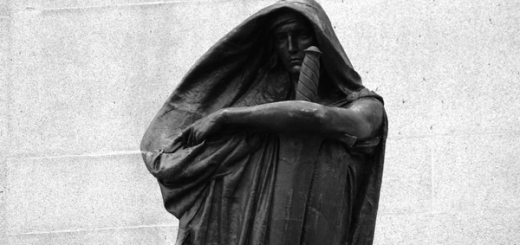Allen v Alberta: The Sound and Fury of Section 7 and Health Care
Canada has an enviable public health care system, providing health care coverage to all Canadian citizens regardless of personal income. What this public system invariably leads to, though, is delays in getting medical treatment. And while those who want or even need to get treatment faster can seek private health care, they may find their insurance coverage for this service barred.
This was the issue in Allen v Alberta, 2015 ABCA 277 [Allen].
The appellant, Dr. Allen, is a dentist. In 2007, Dr. Allen injured his right knee and lower back while playing hockey. Even after numerous treatments, Dr. Allen’s back did not heal. In September 2008, Dr. Allen received an MRI from a private clinic at his own expense. After one last attempted treatment through facet injections, surgery remained Dr. Allen’s only option. Under the Alberta health care system, Dr. Allen could only receive this surgery two years later, in 2011.
The pain became so disabling that Dr. Allen was forced to sell his dentistry practice in July 2009. In desperation, Dr. Allen underwent surgery at his own expense in December 2009. The surgery was successful, relieving his pain and signalling a return to health. The cost of the surgery was $77,000.
Dr. Allen argued that section 26(2) of the Alberta Health Care Insurance Act, RSA 2000, c A-20 prevented him from obtaining private health care insurance and covering the cost of his surgery. The section in question prohibits insurers from issuing private health care insurance for basic health care already covered under the Alberta Health Care Insurance Plan. It gives the public Plan a monopoly on health care insurance for basic health care services. Dr. Allen argued that this was unconstitutional, infringing his section 7 Charter rights.
However, the main issue for the courts was whether the appellant had created the proper procedural and evidentiary platform necessary to decide the constitutionality of this provision.
The chambers judge held that the unconstitutionality of section 26(2) was dependent on whether Dr. Allen could demonstrate that this particular restriction on private health insurance in this specific context offended section 7. In his view, the connection between state-caused effect and the harm suffered by Dr. Allen had not been satisfied. This was because there was no evidence indicating either that the prohibition caused Dr. Allen’s wait time in the Albertan health care system, or that private health care insurance would have been available for this type of surgery anyway.
On appeal, Dr. Allen argued that the chambers judge misapprehended the evidence before him, committed an error by only considering Dr. Allen’s individual situation, and failed to properly follow the precedent set in Chaoulli v Quebec, 2005 SCC 35 [Chaoulli]. There, the SCC had held that a Quebec law prohibiting private health care insurance for publicly insured health services was unconstitutional.
These arguments did not succeed for Dr. Allen. The Alberta Court of Appeal (“ABCA”) held that the prohibition on private health insurance in Alberta was and continues to be constitutional. Further, the Charter challenge was dismissed because of the lack of a proper evidentiary basis.
Justice Frans Slatter for the ABCA underscored the evidentiary concerns raised by the chambers judge, expressing reluctance in deciding constitutional questions in a “factual vacuum” (Allen, para 22). Dr. Allen argued that the binding and analogous precedent in Chaoulli should allow for a summary process in this case. Justice Slatter agreed that in some cases, the precedent might be so definitive and analogous that a full trial with a full evidentiary record would not be necessary. That is not so in this case because of the scope of the binding precedent, the pedigree of the precedent, the clarity of the precedent, and the precise constitutional provision engaged here.
First of all, Justice Slatter argued, precedent is binding on points of law, not on facts. Second, even the facts may not make Chaoulli applicable. Chaoulli arose in Quebec in 2005, and it cannot be assumed that the features of the Quebec health care system align with that in Alberta, nor can we assume that the circumstances in this context were the same as they were ten years ago.
Further, the court in Chaoulli split 3-3-1, so no clear and unified ratio could be divined from this precedent. Three judges (McLachlin CJC, Major, and Bastarache JJ) for the majority held that the public health care system’s monopoly on insurance coverage was arbitrary. Three other judges in dissent (Binnie, Lebel, and Fish JJ)—with whom Justice Slatter clearly agreed—argued that health care policy was not within the purview of the courts. They noted the near-impossibility in determining what a constitutional standard would be for a reasonable wait time.
The seventh judge in Chaoulli—Deschamps J—broke the tie, arguing that while the courts should “leave it to the legislatures to develop social policy, the government had not proven the effectiveness of the public monopoly on health care insurance” (Chaoulli, para 41).
Justice Slatter was clearly concerned with the majority’s treatment of delays in Chaoulli—particularly with their standard that health care should be provided through a “reasonable standard within a reasonable time” (Allen, para 44). He said this looked suspiciously like a policy objective, not a constitutional norm. Echoing Binnie, Lebel, and Fish, Justice Slatter questioned the court’s ability to make judgement on health care delays:
One of the expert witnesses had suggested that there were 12 month delays for one particular procedure. … Does that mean that a 12 month delay is unconstitutional? How about 11 months? Is the constitutionality of the length of the waiting lists as variable as the length of the Chancellor’s foot? Is the test of a “reasonable standard within a reasonable time” impermissibly vague because there is no adequate basis for legal debate or it is impossible for the government to delineate its area of risk? (para 44).
Justice Slatter feared that such an inherently policy-laden decision would mean that “only Goldilocks would know when the statute was constitutional” (para 43). A judge disagreeing with the policy choices government has made does not make the health care system constitutionally arbitrary.
Justice Slatter clearly had issues with the majority judgment in Chaoulli. He highlighted that section 7 is a notoriously unsettled and controversial Charter provision, and the “drafters of the Charter never intended it to be applied to the review of social and economic policies” (para 33). While this comment seemed like a misguided endorsement of originalist interpretation, Justice Slatter stood firmly in his belief that the Chaoulli majority had overstepped their bounds.
One of the concurring ABCA judges—Justice Martin—was hesitant to endorse Justice Slatter’s bold criticisms of the majority in Chaoulli, but did agree—along with the second concurring judge, Justice Watson—that, more importantly, the complex and factually sensitive nature of these issues required more than the evidence given at trial.
Justice Slatter’s decision has been subject of a few critiques since its release. Léonid Sirota of Double Aspect called it “just sound and fury.” He raised one main point of interest worth repeating here: the concern that bringing a constitutional challenge is becoming increasingly expensive and complicated. Sirota writes:
The Charter was supposed to be “the people’s package” of constitutional reform, but the people risk being prevented from bringing Charter cases by the requirement that such cases be supported by expert reports and proceed by way of trial rather than a less expensive procedure.
The high evidentiary burden exhibited in this case is an example of Sirota’s concerns. Justice Slatter gave no indication of what kind of evidence would be good enough in a case like this. Indeed, it is disputable whether this evidence even exists. Alberta does not collect data about patients in extreme pain on wait lists. This would make it difficult for Dr. Allen to provide the link between the prohibition on private health insurance and his own wait time. As noted by Linda McKay-Panos for ABlawg.ca, “any individual would have a great deal of difficulty providing the required evidence.”
It is easily arguable that Dr. Allen’s claim is something the Charter should be protecting, especially given that the Charter does not protect a freestanding right to health care. The complex web of government policy that goes into the health care system also wisely gave Justice Slatter pause. However, the evidentiary and resource-based barriers emphasized in this decision are more problematic, indicating the potential that only those with time and money will be able to bring constitutional litigation before the courts.








Join the conversation